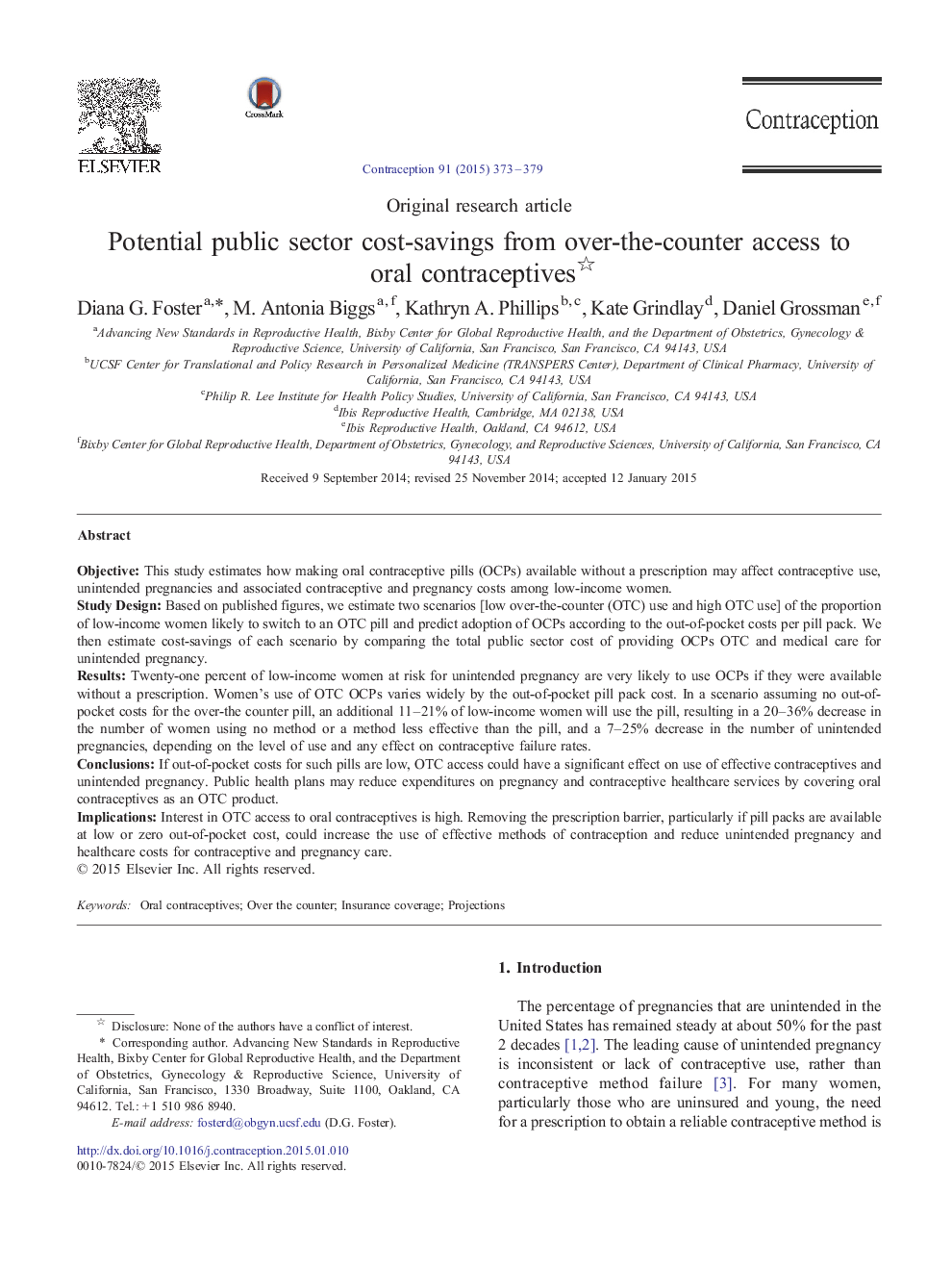| Article ID | Journal | Published Year | Pages | File Type |
|---|---|---|---|---|
| 3913251 | Contraception | 2015 | 7 Pages |
ObjectiveThis study estimates how making oral contraceptive pills (OCPs) available without a prescription may affect contraceptive use, unintended pregnancies and associated contraceptive and pregnancy costs among low-income women.Study DesignBased on published figures, we estimate two scenarios [low over-the-counter (OTC) use and high OTC use] of the proportion of low-income women likely to switch to an OTC pill and predict adoption of OCPs according to the out-of-pocket costs per pill pack. We then estimate cost-savings of each scenario by comparing the total public sector cost of providing OCPs OTC and medical care for unintended pregnancy.ResultsTwenty-one percent of low-income women at risk for unintended pregnancy are very likely to use OCPs if they were available without a prescription. Women's use of OTC OCPs varies widely by the out-of-pocket pill pack cost. In a scenario assuming no out-of-pocket costs for the over-the counter pill, an additional 11–21% of low-income women will use the pill, resulting in a 20–36% decrease in the number of women using no method or a method less effective than the pill, and a 7–25% decrease in the number of unintended pregnancies, depending on the level of use and any effect on contraceptive failure rates.ConclusionsIf out-of-pocket costs for such pills are low, OTC access could have a significant effect on use of effective contraceptives and unintended pregnancy. Public health plans may reduce expenditures on pregnancy and contraceptive healthcare services by covering oral contraceptives as an OTC product.ImplicationsInterest in OTC access to oral contraceptives is high. Removing the prescription barrier, particularly if pill packs are available at low or zero out-of-pocket cost, could increase the use of effective methods of contraception and reduce unintended pregnancy and healthcare costs for contraceptive and pregnancy care.
